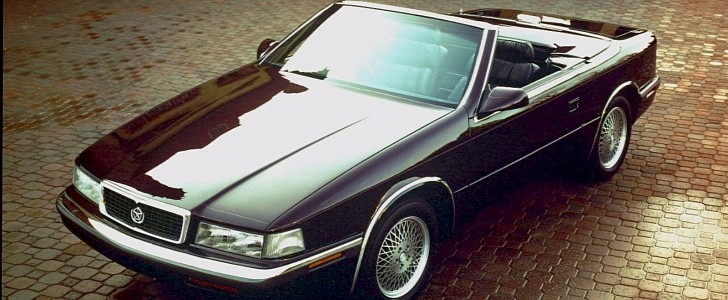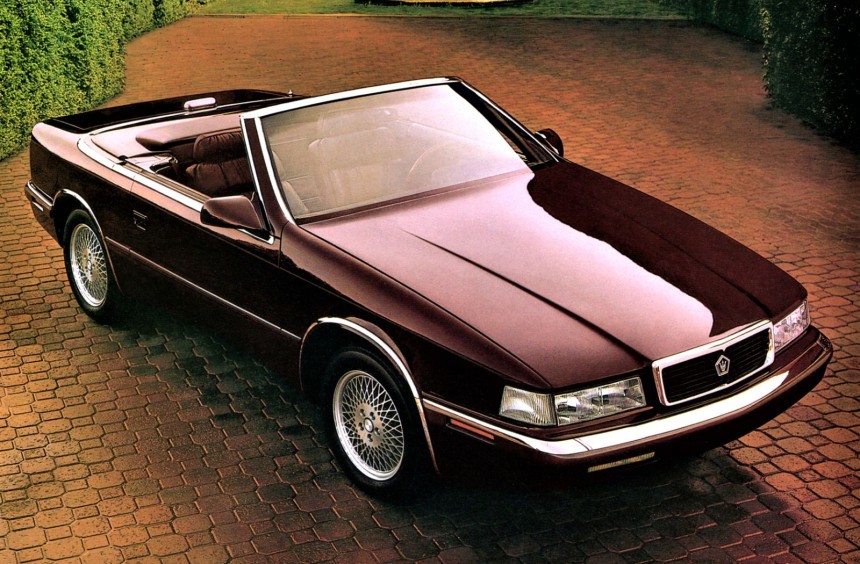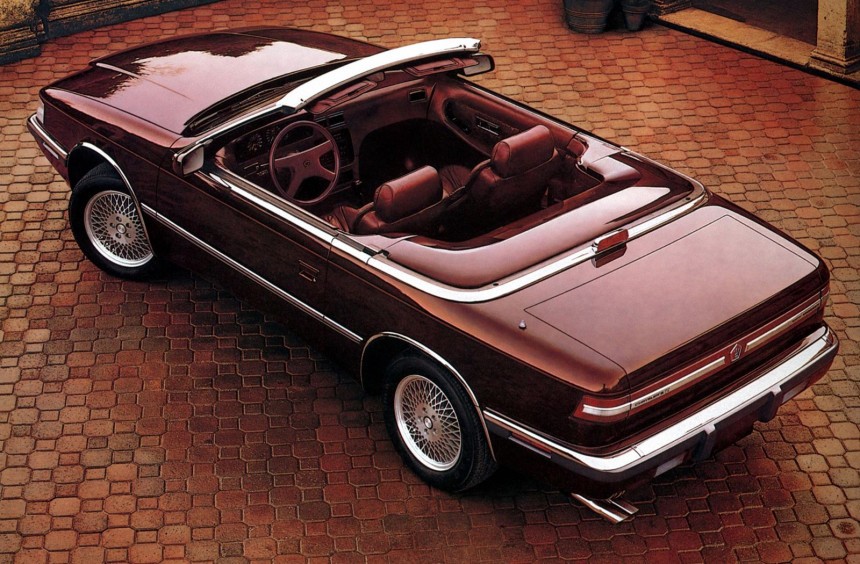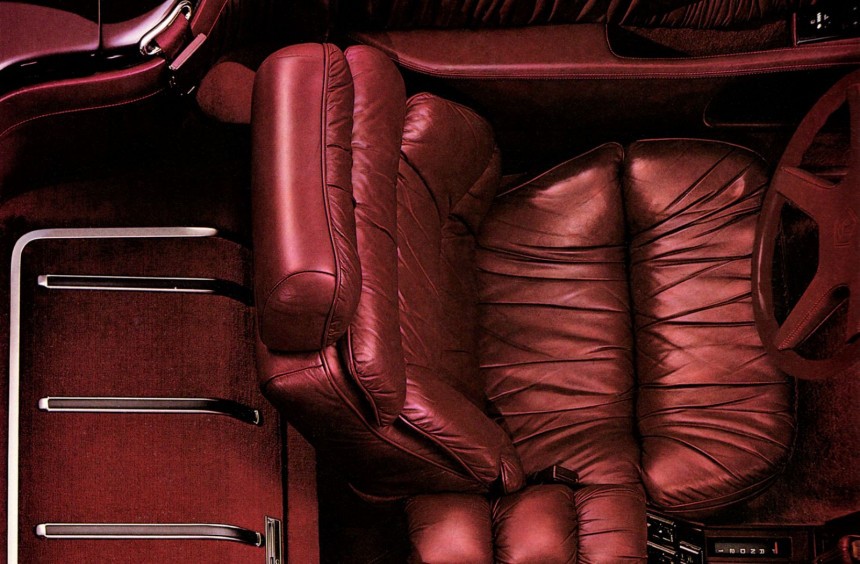When American and Italian carmakers came together, iconic sports cars like the DeTomaso Mangusta, Pantera, or the beautiful Iso Grifo were born. Another chapter in the history of these collaborations is the TC by Maserati, a 1980s grand tourer that was built to take Chrysler to new heights.
Few people are more important for the American automotive industry as Lee Iacocca, the man responsible for the Le Mans-winning Ford GT40 or the legendary Mustang. While working for the Blue Oval, he also forged a close partnership with Alejandro de Tomaso, which led to the creation of the DeTomaso Pantera, a Ford-powered sports car that was sold in the U.S. through Lincoln-Mercury dealerships.
In the early 1980s, Iacocca was the chairman of the Chrysler Corporation, working hard to revive the company. Among the projects, he proposed was a luxurious roadster based on the Plymouth Reliant meant to bring a touch of elegance to the brand’s mediocre model line-up. Although this particular idea never materialized, it inspired the chairman to join forces with de Tomaso once again and build the roadster with his help.
At the time, the Italian businessman was also involved in revitalizing a legendary brand, none other than Maserati which he saved from bankruptcy in the mid-1970s, so the proposal to jointly develop a new car that would bring in some much-needed funds was just too good to turn down.
Thus, in 1984, both companies signed a memorandum of understanding to create this highly anticipated vehicle that would eventually become the Chrysler TC (Turbo Convertible) by Maserati.
From the start, the main goal of development was to create an image booster that would change how customers perceive Chrysler. Iacocca went as far as saying that the TC would be the prettiest Italian to arrive stateside since his mother immigrated.
However, instead of creating a completely new car, they decided to base the TC on the existing third-generation, Chrysler LeBaron. The building block was a modified version of the K platform codenamed Q, while many of its components were shared with the aforementioned model. Furthermore, the bodywork produced by De Tomaso subsidiary Innocenti was just not as pretty as initially advertised.
To make things even worse, the project was delayed for five years because of mismanagement and bickering among Chrysler and Maserati engineers.
When it was finally hit the streets in late-1988, the TC came with a less-than-impressive 160-hp Daytona-spec turbocharged 2.2-liter straight-four coupled to an A413 three-speed automatic transaxle. Although it was assembled in Italy, it didn’t feature a true Maserati engine like most people expected which severely impacted initial sales.
In a desperate bid to salvage the TC, Chrysler introduced a new Mitsubishi-sourced 3.0-liter V6 for the 1990 and 1991 model years but since it only made 141 hp, potential customers were not impressed.
There was also an optional powertrain which consisted of a 2.2-liter 16-valve four-cylinder mated to a five-speed Getrag manual. This turbocharged unit was dubbed the Maserati engine because it was assembled in Italy and featured a Maserati-branded cast valve cover. Although it had many bespoke components, it was based on the standard Chrysler 2.2-liter of the era and with 200 hp on tap, it may have been more suitable for the roadster but was still not as exciting as enthusiasts expected. Even worse, it made the already expensive car even more prohibitive, so only about 500 units were fitted with this engine.
While the TC didn’t excel in terms of performance, it made an effort to impress with its upscale standard features. These included a detachable hardtop with circular, beveled-glass opera windows, a cabin covered in hand-stitched Italian leather, or special wheels made by the Formula One supplier Fondmetal.
Even with these features, the car was deemed mediocre by potential buyers who argued that the $33,000 price tag ($72,306 in today’s money) was just too obscene for what was basically a LeBaron GTC convertible with Maserati badges and some extra leather.
Production ceased in 1990 with the remaining units being marketed as 1991 models. In total only 7,300 TCs were built, each costing Chrysler upwards of $80,000 to manufacture.
Although it started as a great idea, Iacocca’s pet project was ultimately a failure of epic proportions as the company he helped save from an imminent demise now had to face losses close to $600 million. The boss never took responsibility for his bad decisions, blaming the disastrous sale figures on poor marketing.
More than three decades later, the TC by Maserati is only a collector’s item for those who, for some reason, enjoy four-wheeled oddities. You can find a used one for around $10,000 but don’t expect it to be in a pristine state since few people who brought one didn’t end up regretting the decision and took good care of the car.
In the early 1980s, Iacocca was the chairman of the Chrysler Corporation, working hard to revive the company. Among the projects, he proposed was a luxurious roadster based on the Plymouth Reliant meant to bring a touch of elegance to the brand’s mediocre model line-up. Although this particular idea never materialized, it inspired the chairman to join forces with de Tomaso once again and build the roadster with his help.
At the time, the Italian businessman was also involved in revitalizing a legendary brand, none other than Maserati which he saved from bankruptcy in the mid-1970s, so the proposal to jointly develop a new car that would bring in some much-needed funds was just too good to turn down.
Thus, in 1984, both companies signed a memorandum of understanding to create this highly anticipated vehicle that would eventually become the Chrysler TC (Turbo Convertible) by Maserati.
However, instead of creating a completely new car, they decided to base the TC on the existing third-generation, Chrysler LeBaron. The building block was a modified version of the K platform codenamed Q, while many of its components were shared with the aforementioned model. Furthermore, the bodywork produced by De Tomaso subsidiary Innocenti was just not as pretty as initially advertised.
To make things even worse, the project was delayed for five years because of mismanagement and bickering among Chrysler and Maserati engineers.
In a desperate bid to salvage the TC, Chrysler introduced a new Mitsubishi-sourced 3.0-liter V6 for the 1990 and 1991 model years but since it only made 141 hp, potential customers were not impressed.
There was also an optional powertrain which consisted of a 2.2-liter 16-valve four-cylinder mated to a five-speed Getrag manual. This turbocharged unit was dubbed the Maserati engine because it was assembled in Italy and featured a Maserati-branded cast valve cover. Although it had many bespoke components, it was based on the standard Chrysler 2.2-liter of the era and with 200 hp on tap, it may have been more suitable for the roadster but was still not as exciting as enthusiasts expected. Even worse, it made the already expensive car even more prohibitive, so only about 500 units were fitted with this engine.
Even with these features, the car was deemed mediocre by potential buyers who argued that the $33,000 price tag ($72,306 in today’s money) was just too obscene for what was basically a LeBaron GTC convertible with Maserati badges and some extra leather.
Production ceased in 1990 with the remaining units being marketed as 1991 models. In total only 7,300 TCs were built, each costing Chrysler upwards of $80,000 to manufacture.
Although it started as a great idea, Iacocca’s pet project was ultimately a failure of epic proportions as the company he helped save from an imminent demise now had to face losses close to $600 million. The boss never took responsibility for his bad decisions, blaming the disastrous sale figures on poor marketing.
More than three decades later, the TC by Maserati is only a collector’s item for those who, for some reason, enjoy four-wheeled oddities. You can find a used one for around $10,000 but don’t expect it to be in a pristine state since few people who brought one didn’t end up regretting the decision and took good care of the car.














